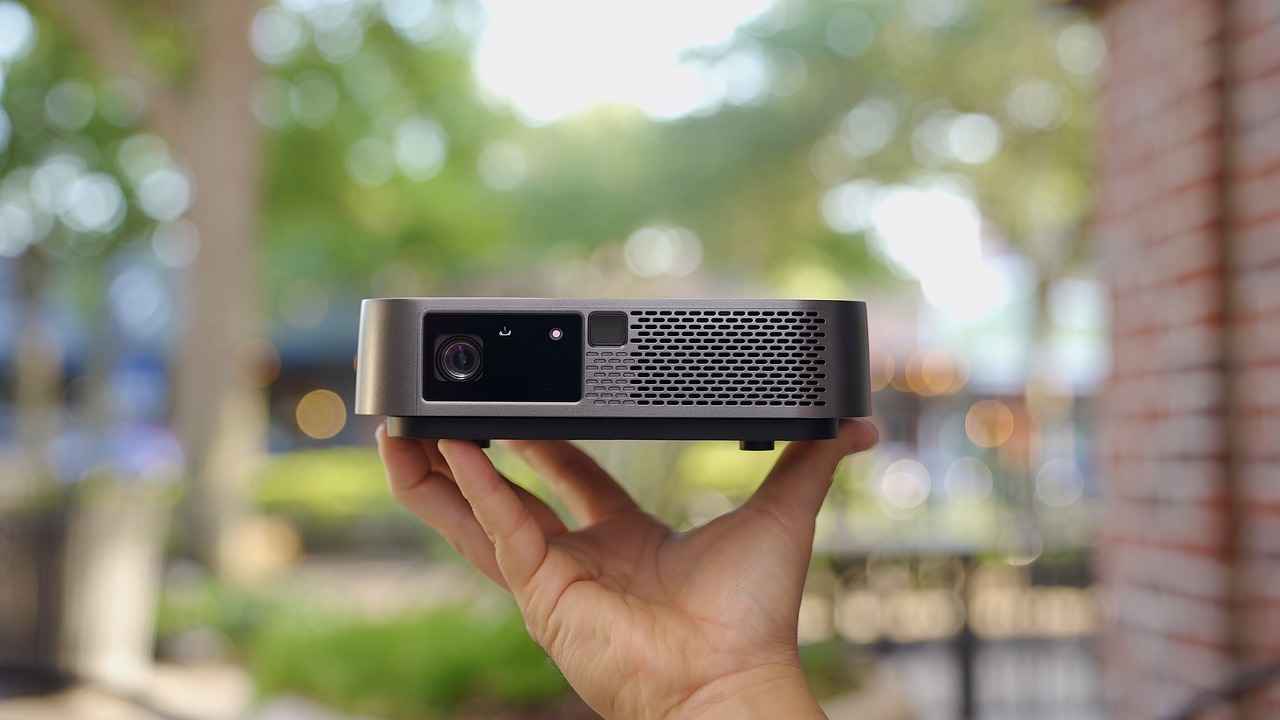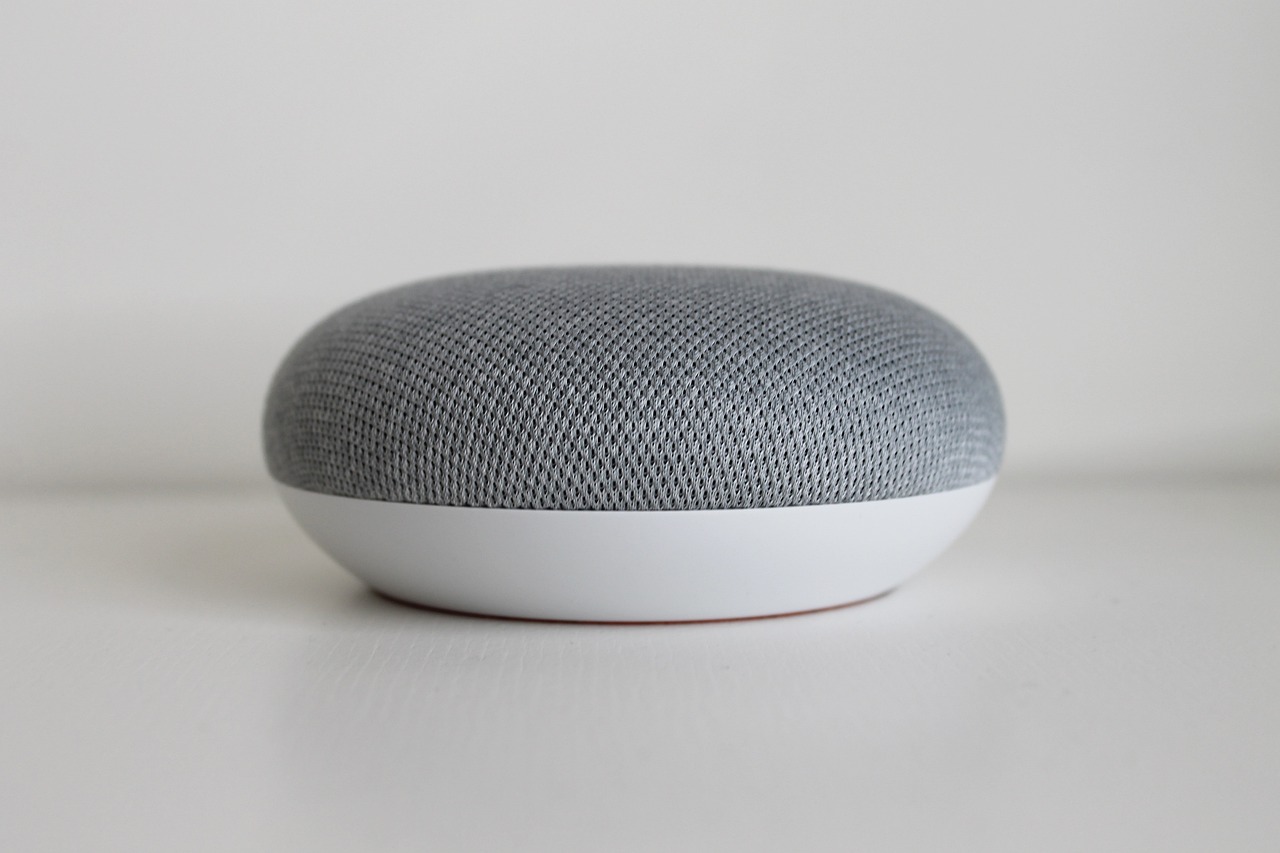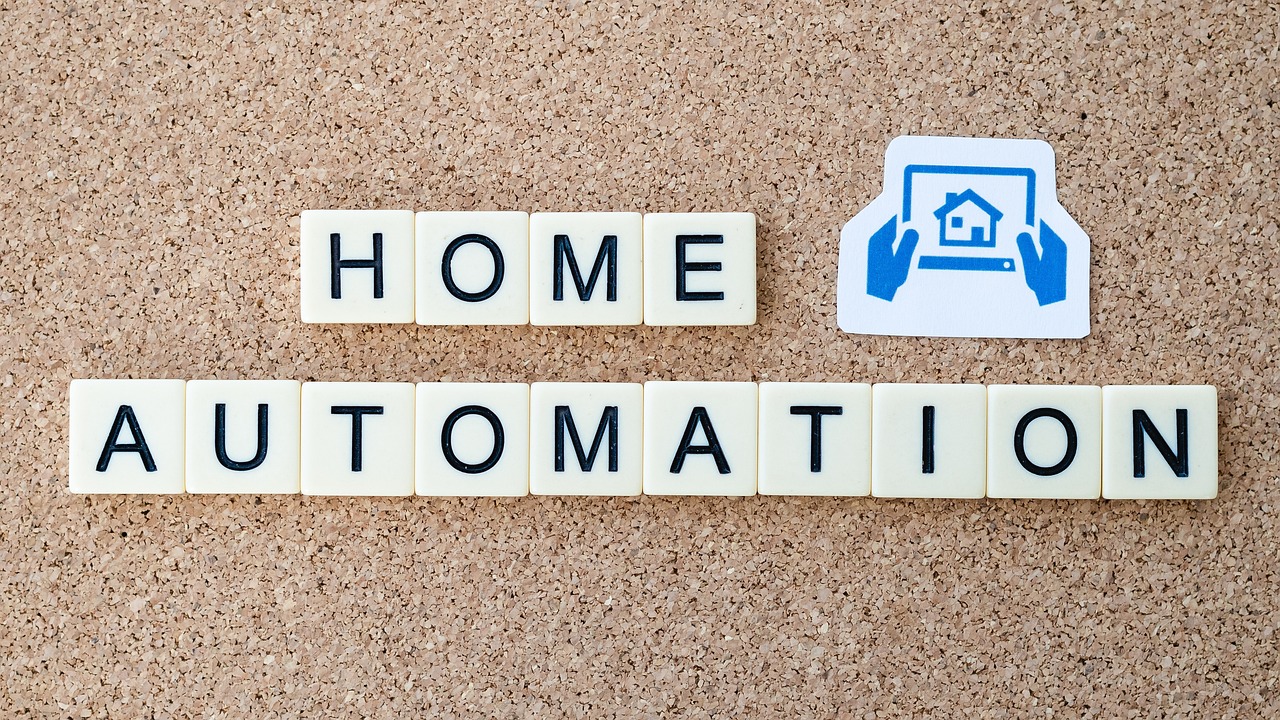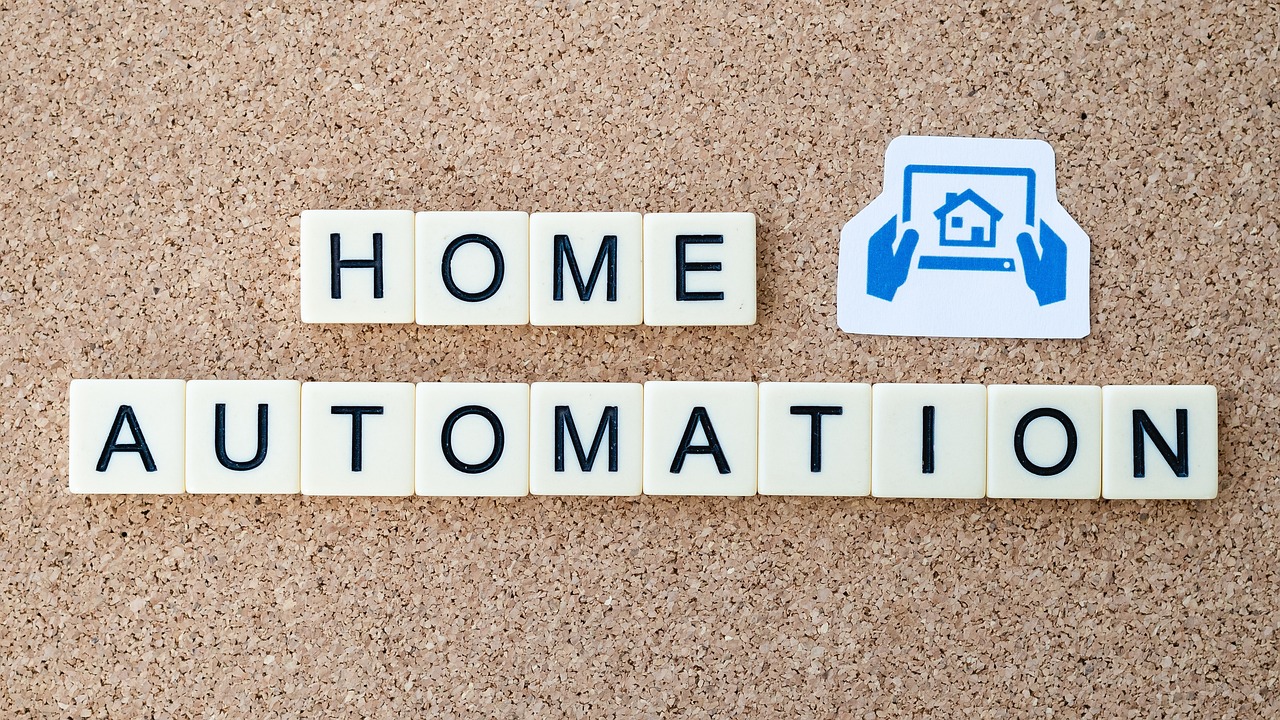This article explores the ongoing competition between Amazon’s Alexa and Google’s smart home ecosystem, examining their features, integrations, and user experiences to determine which platform reigns supreme.
Understanding Smart Home Technology
Smart home technology refers to devices that connect to the internet, enabling remote control and automation. These systems enhance convenience, security, and energy efficiency, making them increasingly popular among consumers.
Amazon Alexa: Features and Capabilities
Amazon Alexa has established itself as a leader in the smart home market. Key features include:
- Voice Recognition: Alexa’s advanced voice recognition technology allows for seamless interaction.
- Device Compatibility: Works with thousands of smart home devices, from lights to security cameras.
- Skills: Alexa offers a wide range of skills, enabling users to customize their experience.
Google Assistant: Features and Capabilities
Google Assistant stands as a formidable competitor. Notable features include:
- Natural Language Processing: Enables more conversational interactions.
- Integration with Google Services: Seamlessly connects with Google apps and services for enhanced functionality.
- Smart Home Control: Effortlessly manages compatible devices using voice commands.
Device Compatibility: Alexa vs. Google
Both platforms support a wide array of smart devices. However, Alexa often has broader compatibility with third-party products, while Google Assistant excels in integrating with Google-based services.
User Experience: Navigating Smart Home Interfaces
User experience is crucial in smart home technology. Alexa’s interface is user-friendly, while Google Assistant leverages its search engine capabilities for an intuitive experience.
Voice Recognition: Accuracy and Responsiveness
Both platforms have made significant strides in voice recognition. Alexa is known for its accuracy in understanding commands, while Google Assistant often excels in contextual understanding.
Smart Home Security: Alexa vs. Google
Security is paramount for smart home users. Both platforms offer robust security features, including privacy settings and data encryption, but users should remain vigilant about their personal data.
Integration with Other Smart Home Ecosystems
Integration with third-party ecosystems enhances functionality. Alexa tends to support a wider range of devices, while Google Assistant benefits from its deep integration with Google services.
Cost Considerations: Budgeting for Smart Home Devices
When investing in smart home technology, cost is a significant factor. Both platforms offer devices at various price points, allowing users to choose according to their budget.
Future Trends in Smart Home Technology
The smart home market is evolving rapidly, with trends like increased AI integration and enhanced device interoperability shaping the future landscape.
User Reviews and Community Feedback
User feedback provides valuable insights into real-world performance. Many users appreciate Alexa’s extensive device compatibility, while others favor Google Assistant’s intuitive interface.
Conclusion: Which Smart Home Assistant Reigns Supreme?
In conclusion, both Amazon Alexa and Google Assistant offer unique advantages. The best choice ultimately depends on user preferences, existing ecosystems, and specific needs.

Understanding Smart Home Technology
Smart home technology encompasses a wide range of devices and systems that connect to the internet, enabling users to control various aspects of their home remotely. This innovative technology has transformed the way we interact with our living spaces, offering convenience, security, and energy efficiency.
At its core, smart home technology includes devices such as smart thermostats, lighting systems, security cameras, and appliances that can be managed through smartphones, tablets, or voice-activated assistants like Amazon Alexa and Google Assistant. The integration of these devices into a cohesive system allows for seamless communication and automation.
Benefits of Smart Home Systems
- Convenience: Users can control their home devices from anywhere, whether they are at work or on vacation.
- Energy Efficiency: Smart thermostats can learn user habits and optimize heating and cooling, leading to significant energy savings.
- Enhanced Security: Smart security systems allow for real-time monitoring and alerts, providing peace of mind.
- Customization: Users can create personalized settings and routines, automating tasks like adjusting lights or locking doors.
As smart home technology continues to evolve, the potential for increased integration and functionality grows. Future advancements may include improved artificial intelligence capabilities, allowing for even more intuitive interactions and automation. With the ongoing development of smart home ecosystems, users can expect to see enhanced compatibility among devices and services, making it easier than ever to create a fully connected home.
In conclusion, understanding smart home technology is essential for anyone looking to enhance their living environment. The benefits are numerous, and as technology advances, the possibilities for smart home systems will only expand, making them an integral part of modern life.

Amazon Alexa: Features and Capabilities
Amazon Alexa has revolutionized the way we interact with technology in our homes. As a leading name in the realm of smart home technology, Alexa offers a wide array of features that cater to the needs of modern users. This section will explore its key capabilities, focusing on voice recognition, device compatibility, and unique skills that enhance the overall user experience.
- Voice Recognition: One of Alexa’s standout features is its advanced voice recognition technology. Alexa can accurately understand and respond to a variety of commands, making it easier for users to control their smart home devices hands-free. This capability is enhanced by continuous updates that improve its understanding of different accents and dialects.
- Device Compatibility: Alexa boasts compatibility with thousands of smart home devices from various manufacturers. This extensive range includes lights, thermostats, security cameras, and more. Users can easily integrate these devices into their home ecosystem, allowing for seamless control through voice commands or the Alexa app.
- Unique Skills: Alexa’s functionality is further enhanced by its unique skills, which are essentially voice-driven capabilities that extend its usefulness. Users can enable skills for various tasks, such as ordering food, playing games, or even getting personalized news updates. With thousands of skills available, users can tailor Alexa to fit their specific needs and preferences.
In conclusion, Amazon Alexa stands out in the smart home technology landscape due to its impressive voice recognition capabilities, extensive device compatibility, and a vast array of unique skills. These features not only make it user-friendly but also enhance the overall smart home experience, catering to the diverse needs of users.

Google Assistant: Features and Capabilities
Google Assistant has emerged as a formidable contender in the smart home arena, providing users with a seamless and intuitive experience. This section delves into the key features and capabilities that distinguish Google Assistant from its competitors, particularly Amazon’s Alexa.
- Natural Language Processing: One of the standout features of Google Assistant is its advanced natural language processing (NLP). This allows users to communicate with the assistant in a more conversational manner. The assistant understands context and can respond to complex queries, making interactions feel more human-like.
- Integration with Google Services: Google Assistant is deeply integrated with various Google services such as Google Calendar, Gmail, and Google Maps. This integration allows users to manage their schedules, send emails, and navigate effortlessly, all through voice commands.
- Smart Home Control: Google Assistant supports a wide range of smart home devices, enabling users to control lights, thermostats, and security systems with simple voice commands. This feature enhances the smart home experience, providing convenience and efficiency.
- Personalized Recommendations: Leveraging machine learning, Google Assistant offers personalized suggestions based on user preferences. Whether it’s recommending music or suggesting recipes, this feature tailors the experience to individual users.
- Multilingual Support: Google Assistant stands out with its ability to understand and respond in multiple languages. This makes it accessible to a broader audience, accommodating users from diverse linguistic backgrounds.
In conclusion, Google Assistant’s combination of natural language processing, seamless integration with Google services, and robust smart home capabilities position it as a leading choice for users seeking to enhance their smart home experience. Its ability to adapt to user preferences and provide personalized interactions further solidifies its role in the evolving landscape of smart technology.

Device Compatibility: Alexa vs. Google
In today’s smart home landscape, compatibility with various smart devices is essential for users seeking seamless integration and control. This section offers a comprehensive comparison of the range of devices supported by Amazon’s Alexa and Google Assistant, highlighting their respective strengths and weaknesses.
Amazon Alexa boasts a wide array of compatible devices, including smart lights, thermostats, security cameras, and entertainment systems. With over 100,000 compatible products from various manufacturers, Alexa provides users with extensive options for creating a connected home. Notably, brands like Philips Hue, Ring, and Nest easily integrate with Alexa, allowing for convenient voice control and automation.
On the other hand, Google Assistant also supports a vast selection of devices, with partnerships that include popular brands such as TP-Link, Logitech, and Samsung SmartThings. Google Assistant excels in natural language processing, making it easier for users to issue complex commands involving multiple devices. For example, a user can say, “Turn off the living room lights and set the thermostat to 72 degrees,” and Google Assistant will execute the command efficiently.
However, while Alexa has a broader range of compatible devices, Google Assistant often leads in terms of smart home ecosystem integration. Many users appreciate the seamless connection between Google services and smart devices, which enhances the overall user experience. For instance, Google Assistant can access calendar events, reminders, and even search the web, providing a more holistic approach to smart home management.
In conclusion, both Alexa and Google Assistant offer impressive device compatibility, but they cater to different user preferences. Alexa excels in the sheer number of compatible devices, while Google Assistant shines in its integration with Google services and user-friendly command execution. Ultimately, the choice between them may depend on the specific devices users wish to incorporate into their smart home setups.

User Experience: Navigating Smart Home Interfaces
User experience is a crucial aspect of smart home technology, influencing how users interact with their devices and systems. In this section, we will delve into the interfaces of both Amazon Alexa and Google Assistant, examining their design, ease of use, and overall accessibility for a diverse range of users.
When evaluating user experience, the interface design of a smart assistant plays a significant role. Both Alexa and Google Assistant offer intuitive interfaces, but they cater to different user preferences. For instance, Alexa’s interface is often praised for its straightforwardness, allowing users to navigate through voice commands and a user-friendly app. In contrast, Google Assistant benefits from its integration with Google’s ecosystem, providing a more seamless experience for users who are already familiar with Google services.
Accessibility is another critical factor. Both platforms strive to be inclusive, offering features that assist users with disabilities. Alexa has voice feedback and screen reader capabilities, making it easier for visually impaired users to interact with their devices. Similarly, Google Assistant includes features like voice commands and visual aids, enhancing accessibility for all users.
| Feature | Amazon Alexa | Google Assistant |
|---|---|---|
| Interface Design | Simple and straightforward | Integrated with Google services |
| Accessibility Features | Voice feedback, screen reader | Voice commands, visual aids |
| Device Control | Broad compatibility | Google ecosystem integration |
Ultimately, the choice between Alexa and Google Assistant may boil down to personal preference. Users who prioritize a straightforward interface may lean towards Alexa, while those who value integration with existing Google services might prefer Google Assistant. Regardless of the choice, both platforms strive to enhance user experience, making smart home technology more accessible and enjoyable for everyone.

Voice Recognition: Accuracy and Responsiveness
Voice recognition technology is a pivotal component of modern smart assistants, allowing them to interpret and respond to user commands effectively. In this section, we will delve into the accuracy and responsiveness of two leading platforms: Amazon’s Alexa and Google Assistant. Understanding how these technologies perform is essential for users looking to optimize their smart home experience.
Both Alexa and Google Assistant utilize advanced machine learning algorithms to enhance their voice recognition capabilities. However, they differ in their approaches and effectiveness. For instance, while Alexa has made significant strides in recognizing commands across various accents and dialects, Google Assistant leverages its extensive database and natural language processing (NLP) to understand context better.
| Feature | Amazon Alexa | Google Assistant |
|---|---|---|
| Accuracy | High, but varies by accent | Very high, excels in context understanding |
| Response Time | Quick, but can lag with complex commands | Generally faster, especially with follow-up questions |
| Customization | Extensive skills and routines | Deep integration with Google services |
In terms of responsiveness, Google Assistant tends to outperform Alexa, particularly when handling multiple commands or follow-up questions. Users often report that Google Assistant can maintain context better, making interactions feel more natural and fluid.
Moreover, the user interface plays a crucial role in how effectively these assistants respond. Alexa’s interface allows for a wide range of customizations, while Google Assistant’s integration with Google services provides a seamless experience for users already embedded in the Google ecosystem.
In conclusion, while both Alexa and Google Assistant offer robust voice recognition capabilities, Google Assistant currently leads in terms of accuracy and responsiveness, particularly in complex conversational scenarios. For users seeking a smart assistant that can understand and execute commands efficiently, Google Assistant may be the preferable choice.

Smart Home Security: Alexa vs. Google
In today’s digital age, security has emerged as a paramount concern for users of smart home technology. With the increasing number of connected devices, ensuring the safety of personal data and privacy is crucial. This section will delve into the security features offered by both Amazon’s Alexa and Google’s smart home ecosystem, providing a comprehensive comparison of their privacy settings and data protection measures.
Privacy Settings
- Amazon Alexa: Alexa offers users the ability to manage their privacy through a dedicated privacy dashboard. Users can review their voice recordings, delete specific interactions, or even opt to delete all data associated with their account. Additionally, Alexa allows users to mute the microphone, providing an extra layer of control over when the device is listening.
- Google Assistant: Similarly, Google Assistant provides a privacy hub where users can manage their voice data. Google emphasizes transparency, allowing users to see what data is collected and how it is used. Users can also delete their voice activity and adjust settings to limit data sharing.
Data Protection Measures
| Feature | Amazon Alexa | Google Assistant |
|---|---|---|
| Encryption | Data is encrypted both in transit and at rest. | Utilizes end-to-end encryption for data security. |
| Two-Factor Authentication | Supports two-factor authentication for account access. | Offers two-step verification for added security. |
| Third-Party Integrations | Strict guidelines for third-party skills and apps. | Robust vetting process for third-party integrations. |
Both platforms take data protection seriously, implementing rigorous measures to safeguard users’ information. However, users must remain proactive in managing their privacy settings and understanding how their data is utilized.
In conclusion, while both Alexa and Google Assistant provide comprehensive security features, the choice between them may ultimately depend on user preferences regarding privacy management and data security practices. By understanding these elements, users can make informed decisions that best suit their smart home needs.

Integration with Other Smart Home Ecosystems
In today’s connected world, the ability to integrate various smart home devices and ecosystems is essential for maximizing functionality and user experience. Amazon Alexa and Google Assistant have made significant strides in this area, allowing users to control a wide range of third-party devices seamlessly.
Both platforms support a plethora of smart home devices, from lighting systems and thermostats to security cameras and smart locks. This interoperability is crucial as it enables users to create a cohesive smart home environment tailored to their needs. For instance, with Alexa, users can integrate devices from brands like Philips Hue, Ring, and Nest, while Google Assistant works well with products from companies such as TP-Link, August, and Arlo.
Moreover, the integration capabilities of these platforms extend beyond just device compatibility. They also allow for the creation of automations and routines. For example, users can set up routines that trigger multiple devices with a single command. An Alexa user might say, “Alexa, good night,” which could turn off the lights, lock the doors, and adjust the thermostat. Similarly, a Google Assistant user can create a routine that activates their coffee maker, plays morning news, and sets the thermostat to a comfortable temperature.
Additionally, both Alexa and Google Assistant support integration with various smart home ecosystems, such as IFTTT (If This Then That). This service allows users to create custom automations that link different services and devices together, providing even more flexibility and control. For instance, users can set up an automation that turns on the porch light when their smart doorbell detects motion.
In conclusion, the integration capabilities of Amazon Alexa and Google Assistant significantly enhance their functionality, allowing users to create a more connected and efficient smart home. By supporting a wide range of third-party devices and offering robust automation features, both platforms cater to the diverse needs of modern smart home users.

Cost Considerations: Budgeting for Smart Home Devices
When venturing into the world of smart home technology, understanding your budget is essential. With a plethora of devices available, both compatible with Amazon Alexa and Google Assistant, making informed financial decisions can significantly impact your overall experience. This section aims to provide valuable insights into the costs associated with smart home devices, helping users navigate their options effectively.
| Device Type | Average Cost (USD) | Compatibility |
|---|---|---|
| Smart Speakers | $50 – $200 | Alexa, Google Assistant |
| Smart Lights | $10 – $50 per bulb | Alexa, Google Assistant |
| Smart Thermostats | $100 – $250 | Alexa, Google Assistant |
| Smart Security Cameras | $50 – $300 | Alexa, Google Assistant |
| Smart Plugs | $15 – $30 | Alexa, Google Assistant |
Smart home devices vary widely in price, depending on their functionality and brand. For example, a basic smart speaker can start at around $50, while high-end models may reach up to $200. Similarly, smart lighting options can be quite affordable, with individual bulbs costing as little as $10, but advanced systems can quickly add up.
It’s also important to consider potential additional costs, such as installation fees for certain devices or subscriptions for premium features. Additionally, some devices may require a hub to function optimally, which can further increase your initial investment.
Ultimately, setting a clear budget before diving into the smart home market allows users to prioritize their needs and avoid overspending. By comparing prices and features, you can find the best devices that fit your lifestyle and budget, ensuring a seamless integration into your home.

Future Trends in Smart Home Technology
The smart home market is undergoing a significant transformation, driven by advancements in technology and changing consumer preferences. As we look towards the future, several trends and technologies are poised to shape the competitive landscape between Amazon’s Alexa and Google Assistant.
- Increased Interoperability: One of the most significant trends is the push for greater interoperability among devices. Consumers are increasingly demanding that their smart home systems work seamlessly together, regardless of the brand. This will encourage both Alexa and Google to enhance their compatibility with a wider array of devices.
- AI and Machine Learning Enhancements: Both platforms are investing heavily in artificial intelligence and machine learning. This will lead to smarter assistants that can learn user preferences over time, providing a more personalized experience.
- Voice Recognition Improvements: As voice recognition technology continues to improve, both Alexa and Google Assistant will become more accurate in understanding commands and context, reducing the frustration users often experience with misinterpretations.
- Focus on Privacy and Security: With growing concerns about data privacy, both companies are likely to implement more robust security measures. Users will have more control over their data, influencing their choice of platform.
- Smart Home Automation: The future will see an increase in automation capabilities, allowing users to set routines that automate multiple devices with a single command. This could give one platform a competitive edge over the other.
As these trends unfold, the competition between Alexa and Google Assistant will intensify. Both platforms must adapt to these changes to maintain their market positions, ultimately benefiting consumers with enhanced features and improved user experiences.

User Reviews and Community Feedback
User feedback plays a crucial role in shaping the landscape of smart home technology, particularly when it comes to platforms like Amazon’s Alexa and Google Assistant. Understanding how real users experience these devices can provide valuable insights that go beyond technical specifications and marketing claims.
In this section, we will explore a compilation of reviews and ratings from users of both Alexa and Google Assistant. By examining community feedback, we can gain a clearer picture of the strengths and weaknesses of each platform.
- Alexa User Reviews:
- Many users appreciate Alexa’s extensive device compatibility, allowing them to control a wide range of smart home products seamlessly.
- Users often highlight the voice recognition capabilities, noting that Alexa can understand various accents and dialects effectively.
- However, some users express frustration with occasional connectivity issues, particularly when multiple devices are in use.
- Google Assistant User Reviews:
- Google Assistant users frequently commend the platform’s natural language processing, which makes interactions feel more conversational.
- Integration with Google services, such as Google Calendar and Gmail, is a significant plus for many users, enhancing productivity.
- On the downside, some users report that Google Assistant may struggle with certain commands, particularly in noisy environments.
Overall, user feedback reveals that both platforms have their unique strengths and challenges. While Alexa shines in device compatibility and voice recognition, Google Assistant excels in natural language processing and integration with other Google services. Understanding these user experiences can help potential buyers make informed decisions when choosing between these two smart home giants.

Conclusion: Which Smart Home Assistant Reigns Supreme?
As we reach the end of our exploration into the competition between Amazon’s Alexa and Google Assistant, it is essential to reflect on the key aspects discussed throughout this article. Both platforms have made significant strides in the realm of smart home technology, each bringing unique features and capabilities to the table.
In terms of device compatibility, Alexa boasts a wider range of supported devices, making it a versatile choice for users looking to integrate various smart home products. However, Google Assistant excels in natural language processing, allowing for more intuitive interactions and responses. This can lead to a more engaging user experience, particularly for those who prioritize seamless communication with their smart devices.
When evaluating user experience, both platforms offer intuitive interfaces, but the choice may ultimately depend on personal preference. Alexa’s skills and routines provide a customizable experience, while Google Assistant’s integration with Google services can enhance functionality for users already embedded in the Google ecosystem.
Security is a paramount concern for many users, and both platforms have implemented robust measures to protect user data. However, the differences in their privacy policies and settings may influence a user’s decision based on their comfort level with data sharing.
Finally, considering cost is crucial, as both platforms offer devices at various price points. Users should weigh their options carefully, considering not only the initial investment but also the long-term benefits and compatibility with existing devices.
In conclusion, the choice between Alexa and Google Assistant ultimately depends on individual needs and preferences. While Alexa may be the better option for those seeking extensive compatibility, Google Assistant offers a more natural interaction experience. Both platforms have their merits, and the best choice will vary from user to user, depending on their specific smart home requirements.
Frequently Asked Questions
- What is the main difference between Alexa and Google Assistant?
While both Alexa and Google Assistant serve as smart home hubs, their main differences lie in their ecosystems. Alexa is deeply integrated with Amazon services, making it great for shopping and music. Google Assistant excels in natural language processing and is tightly linked with Google services, offering a more conversational experience.
- Can I use Alexa and Google Assistant together?
Yes, you can use both assistants in your smart home setup. However, they operate independently, so you’ll need to manage them separately. Think of it like having two friends with different skills; each brings something unique to the table!
- Which assistant has better device compatibility?
Both Alexa and Google Assistant support a wide range of smart devices, but Alexa generally has a broader compatibility with third-party devices. However, Google Assistant is catching up quickly, especially with products from major brands.
- Is one assistant more secure than the other?
Security features are crucial when choosing a smart assistant. Both Alexa and Google Assistant have robust security measures, but Google has a slight edge with its regular updates and privacy settings, making it a solid choice for security-conscious users.
- How do I choose between Alexa and Google Assistant?
Choosing between the two often comes down to your personal preferences and existing ecosystem. If you’re an Amazon user, Alexa might feel more natural, whereas if you rely on Google services, Google Assistant could be a better fit.


























































